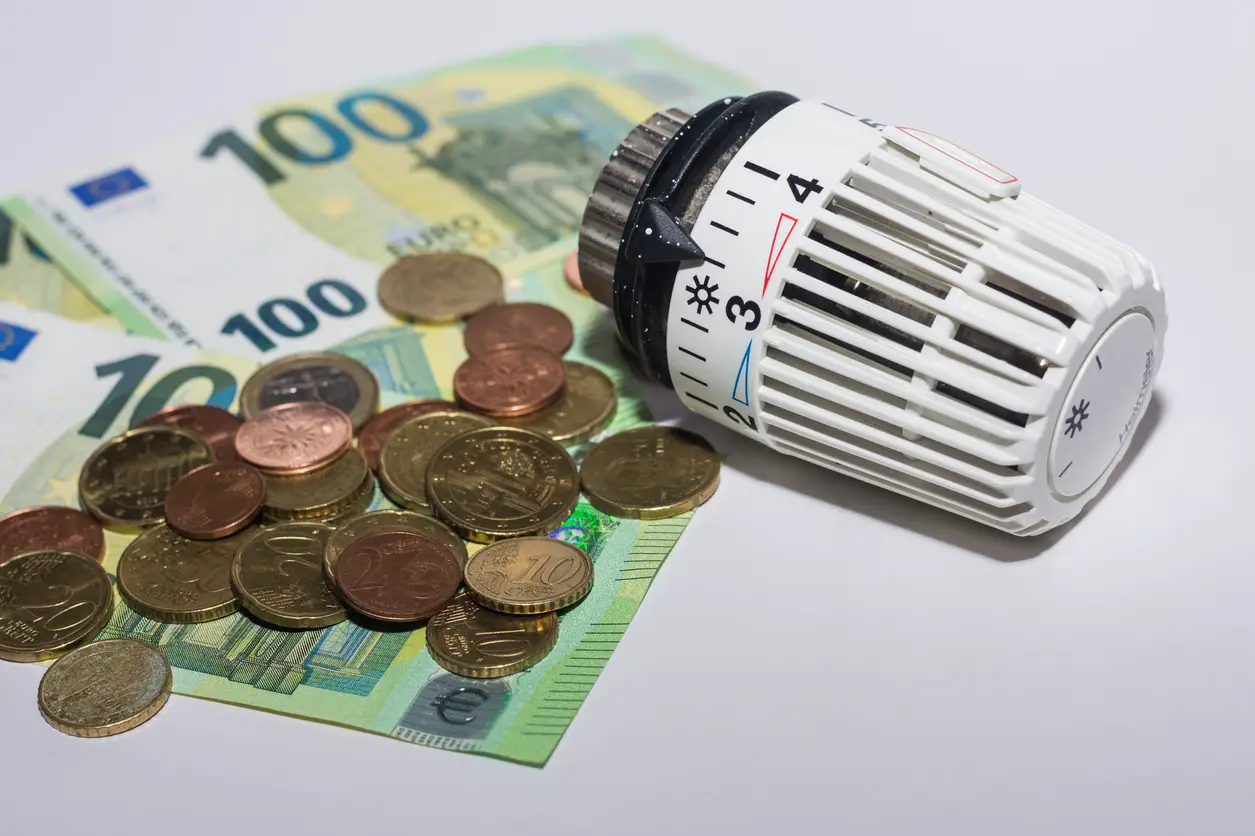Ham radio is a popular hobby among many people around the world. However, one of the most common questions asked by those who are considering venturing into the world of amateur radio is whether or not it is an expensive hobby. The answer to this question is not straightforward, as the cost of a ham radio setup can greatly vary depending on the equipment and licensing needed to effectively dive into this fascinating world of communication.
Some people believe that ham radio is an expensive hobby, while others argue that it can be as cheap or as expensive as you want to make it. The cost of a ham radio setup can range from as low as $100 to as high as $100,000 for the complex low-end High-Frequency band shacks. When starting, one will need about $30 for study guides and other materials that come with a set of questions helpful for passing your ham license exam and a handheld transceiver/HT which can cost as low as $25. However, the cost can quickly add up if one decides to invest in more advanced equipment, such as high-end radios and antennas.
In this article, we will explore the question of whether or not ham radio is an expensive hobby. We will look at the different factors that can influence the cost of a ham radio setup, such as the equipment needed, licensing requirements, and ongoing expenses. By the end of this article, readers will have a better understanding of the costs involved in this fascinating hobby and whether or not it is worth pursuing.
Understanding Ham Radio
Ham radio, also known as amateur radio, is a hobby that involves using radio equipment to communicate with other hams around the world. Hams use a variety of frequencies, including VHF and UHF, to communicate with each other. Ham radio is a popular hobby due to its versatility, allowing hams to communicate with others across town, around the world, and even into space.
Ham Radio Vs Internet and Social Media
While the internet and social media have made communication easier and more accessible, ham radio has some unique advantages. Unlike the internet, which relies on infrastructure that can be disrupted in emergencies, ham radio can be used to communicate in situations where other forms of communication are unavailable. Ham radio can also be used to communicate with other hams around the world without relying on third-party services, making it a more private form of communication.
Communications and Amateur Bands
Hams use a variety of frequencies, including VHF and UHF, to communicate with each other. These frequencies are allocated by the Federal Communications Commission (FCC) for amateur use. Hams are required to obtain a license from the FCC before they can operate on these frequencies. The license requirements vary depending on the level of access the ham wants to have to the amateur bands.
Emergency Communications and Public Service
One of the most important uses of ham radio is for emergency communications. Hams are often called upon to provide communication support during emergencies, such as natural disasters or other events that disrupt traditional communication channels. Hams also provide communication support for public service events, such as marathons and parades.
Interference can be a problem for hams, as their signals can be disrupted by other radio signals or electronic devices. Hams must take steps to minimize interference, including using proper equipment and antenna placement. Despite these challenges, ham radio remains a popular and rewarding hobby for those interested in communication and technology.
Getting into Ham Radio
Getting into ham radio can seem intimidating, especially for beginners. However, with the right resources and guidance, it can be a rewarding and enjoyable hobby for people of all ages.
Starting Age and Education
One of the great things about ham radio is that there is no age limit to getting started. Young people can get involved in the hobby and learn valuable skills that can benefit them in their future careers. In fact, many schools and educational institutions offer courses and programs related to ham radio and electronics.
Technician, General, and Extra Classes
To operate a ham radio, one must obtain a license from the Federal Communications Commission (FCC). There are three license classes available: Technician, General, and Amateur Extra. Each class has different privileges and exam requirements.
The Technician class license is the entry-level license and allows the operator to communicate on all frequencies above 30 MHz. The exam consists of 35 multiple-choice questions, and passing requires a score of at least 26 correct answers.
The General class license allows the operator to communicate on all amateur frequencies, including the HF (high frequency) bands. The exam consists of 35 multiple-choice questions, and passing requires a score of at least 26 correct answers.
The Amateur Extra class license is the highest level of license and grants the operator full privileges on all amateur bands. The exam consists of 50 multiple-choice questions, and passing requires a score of at least 37 correct answers.
Cost of Education and Licensing
The cost of getting licensed varies depending on the resources used. Many resources, including study guides and practice exams, are available for free online. However, some individuals may choose to take a class or attend a testing session, which may come with a fee.
Overall, the cost of getting into ham radio is relatively low compared to other hobbies. While there may be some initial investment in equipment, such as a radio and antenna, there are many affordable options available. For example, the Baofeng handheld radio is a popular choice for beginners, with prices starting at around $30.
In conclusion, getting into ham radio is an accessible and enjoyable hobby for people of all ages. With the right resources and guidance, anyone can obtain a license and start communicating on the airwaves.
Cost of Ham Radio
Ham radio can be an expensive hobby, but the costs can vary depending on the equipment you choose to purchase. In this section, we will explore the different costs associated with ham radio.
Equipment Costs
The cost of ham radio equipment can range from a few hundred dollars to several thousand dollars. The equipment you need will depend on the type of ham radio activities you plan to participate in. For example, if you plan to operate on the HF bands, you will need a transceiver that covers those frequencies. If you plan to operate on the VHF or UHF bands, you will need a transceiver that covers those frequencies.
In addition to a transceiver, you will also need an antenna, power supply, and connectors. The cost of these items can vary depending on the quality and brand. It is important to do your research and choose equipment that fits your budget and needs.
Second-Hand Equipment
One way to save money on ham radio equipment is to purchase second-hand equipment. Second-hand equipment can be found at ham radio swap meets, online marketplaces, and ham radio forums. When purchasing second-hand equipment, it is important to inspect the equipment carefully and ask questions about its history and condition.
Used Gear
Another option for saving money on ham radio equipment is to purchase used gear. Used gear can be found at ham radio stores and online marketplaces. When purchasing used gear, it is important to inspect the equipment carefully and ask questions about its history and condition.
In conclusion, the cost of ham radio can vary depending on the equipment you choose to purchase. While it can be an expensive hobby, there are ways to save money by purchasing second-hand equipment or used gear. It is important to do your research and choose equipment that fits your budget and needs.
Ham Radio Mastery: The All-In-One Guide to Acing Your Technician Class Exam & Unlocking the World of Amateur Communication
With the guidance and support of this book, you can master the intricacies of ham radio and join the ranks of over one million ham radio operators worldwide
Licensing and Exams
Licensing Process
To operate a ham radio, one must obtain a license from the U.S. Federal Communications Commission (FCC). The licensing process involves passing an exam that tests knowledge of radio theory, regulations, and operating practices. There are three classes of ham radio licenses: Technician, General, and Extra. Each class requires passing a progressively more difficult exam.
To obtain a license, one must first study the material and then schedule an exam with a Volunteer Examiner (VE) team. The VE team administers the exam and submits the results to the FCC for processing. Once the license is issued, the operator will be assigned a call sign that they will use to identify themselves on the airwaves.
Exam Details and Fees
The exam consists of multiple-choice questions and is administered in person by VE teams across the country. The number of questions and time allotted for the exam vary depending on the license class. The Technician exam has 35 questions, the General has 35, and the Extra has 50.
The exam fee is typically around $15 to $40, depending on the location and VE team. However, since April 19, 2022, the FCC has started collecting a $35 fee for new amateur radio licenses. The cost of study materials varies depending on the source and the license class.
License Fee
In addition to the exam fee, there is also a fee for obtaining a ham radio license. The current fee for a new license is $35, as mentioned earlier. However, there is no fee for renewing or modifying an existing license.
It is worth noting that the cost of obtaining a ham radio license is relatively low compared to other hobbies. While the cost of equipment can add up, the license fee and exam fee are a one-time expense that allows an operator to use their equipment for years to come.
Equipment and Setup
Ham radio is a hobby that requires a certain amount of equipment to get started. While it is possible to start with a basic setup, many enthusiasts choose to invest in more advanced equipment over time. This section will cover the different types of equipment needed for a ham radio setup.
Basic Radio Equipment
The basic equipment needed for a ham radio setup includes a transceiver, antenna, power supply, and cables. The transceiver is the heart of the ham radio station and is used to both transmit and receive signals. The antenna is used to send and receive radio signals and comes in various types and sizes. The power supply is used to power the transceiver and other equipment, while cables and connectors are used to connect all the equipment together.
Antennas and Transceivers
Choosing the right antenna and transceiver is critical to the success of a ham radio setup. The type of antenna used will depend on the location of the station, the frequency being used, and the power output of the transceiver. Portable and handheld radios may require a smaller antenna, while a stationary station may require a larger, more powerful antenna.
Transceivers come in various sizes and power outputs. A handheld transceiver is ideal for portable use, while a stationary station may require a more powerful transceiver. Amplifiers can be used to increase the power output of a transceiver, but they can be expensive and require additional equipment.
Power Supply
A reliable power supply is essential for a ham radio setup. It is important to choose a power supply that can handle the power requirements of the transceiver and other equipment. A backup power supply is also recommended in case of a power outage.
Cables and Connectors
Cables and connectors are used to connect all the equipment together. Coaxial cable is used to connect the transceiver to the antenna, while grounding wire is used to protect the equipment from lightning strikes. It is important to choose high-quality cables and connectors to ensure a reliable connection.
In conclusion, while a basic ham radio setup can be relatively inexpensive, more advanced setups can be quite costly. It is important to choose the right equipment for the location and frequency being used. A reliable power supply and high-quality cables and connectors are essential for a successful ham radio setup.
Advanced Topics
Advanced Equipment and Engineering
For those who are interested in exploring the technical side of ham radio, there are a variety of advanced equipment and engineering topics to explore. This includes topics such as antenna design and tuning, tower installation, and the use of specialized equipment like tuners and amplifiers. Some of the most popular equipment brands in the ham radio community include AnyTone, Baofeng, and Icom.
Contesting and Morse Code
Contesting is a popular activity in the ham radio community that involves competing with other radio operators to make the most contacts within a specified time period. This can be a fun and challenging way to test your skills and equipment. Morse code is also a popular aspect of ham radio, and many operators enjoy learning and practicing this classic method of communication.
International Ham Radio
Ham radio is a global hobby, and many operators enjoy communicating with others from around the world. There are a variety of international ham radio organizations and events, such as the International Amateur Radio Union and the World Radiosport Team Championship. In addition, there are a variety of resources available for those who want to learn more about international ham radio, including online forums and social media groups.
Overall, while there are certainly some costs associated with getting started in the hobby of ham radio, there are also a variety of advanced topics and activities to explore for those who want to dive deeper into the technical and competitive aspects of the hobby. Whether you’re interested in engineering and equipment, contesting and Morse code, or international ham radio, there are plenty of opportunities to learn and grow as a ham radio operator.
Community and Resources
Joining a Local Club
Joining a local ham radio club is a great way to connect with other enthusiasts in your area. Not only can you learn from experienced operators, but you can also participate in club events and activities. Local clubs often host classes and workshops to help newcomers get started in the hobby, as well as provide access to club-owned equipment for those who may not have their own.
One popular organization is the American Radio Relay League (ARRL), which has over 1,000 affiliated clubs across the United States. The ARRL also offers a variety of resources for members, including a monthly magazine and online forums.
Study Materials and Guides
To become a licensed ham radio operator, individuals must pass an exam administered by the Federal Communications Commission (FCC). There are several study materials and guides available to help prepare for the exam, including study books and online courses.
The ARRL offers a variety of study materials, including books and online courses, as well as a searchable database of exam sessions. Additionally, the FCC provides a free study guide on their website.
Online Communities
Online communities are a great resource for connecting with other ham radio enthusiasts from around the world. These communities provide a platform for asking questions, sharing experiences, and discussing the latest trends and technologies in the hobby.
Several popular online communities include QRZ.com, eHam.net, and Reddit’s r/amateurradio. These communities offer forums, blogs, and other resources for both beginners and experienced operators.
Overall, the ham radio community offers a wealth of resources and support for those interested in the hobby. Whether through local clubs, study materials, or online communities, there are many opportunities to connect with others and learn more about this fascinating hobby.
Legal and Regulatory Aspects
FCC and Government Agencies
The Federal Communications Commission (FCC) is the primary regulatory body for amateur radio in the United States. The FCC allocates frequency bands for amateur radio use, sets technical standards, and enforces rules and regulations. The FCC’s rules cover a wide range of topics, including licensing requirements, frequency usage, power limits, and antenna restrictions.
Amateur radio operators are required to obtain a license from the FCC before operating on the air. The FCC offers three classes of licenses: Technician, General, and Extra. Each class of license requires passing an exam that covers basic electronics, radio theory, and operating procedures. The FCC also requires that all amateur radio operators follow certain operating procedures and rules, such as identifying their station and following frequency usage guidelines.
In addition to the FCC, other government agencies may also regulate amateur radio. For example, the National Telecommunications and Information Administration (NTIA) is responsible for managing spectrum use by federal agencies, including the military. The Department of Homeland Security (DHS) may also play a role in regulating amateur radio during emergencies or disasters.
International Regulations
Amateur radio regulations vary by country, and international regulations may also apply. The International Telecommunication Union (ITU) is a United Nations agency that coordinates global telecommunications policy and regulations. The ITU allocates frequency bands for amateur radio use on a worldwide basis and sets technical standards for radio equipment.
Some countries may have additional regulations or requirements for amateur radio operators. For example, in China, amateur radio operators are required to obtain a special license from the government and are prohibited from communicating with foreign stations. China is also changing the game in other ways, putting cheap radios on the market. A few years ago, an entry-level handheld UHF/VHF radio cost around US $100. Now, thanks to Chinese manufacturers, amateur radio operators can purchase similar radios for under $30.
Overall, amateur radio operators must comply with a range of legal and regulatory requirements, both domestically and internationally. While the specifics of these requirements may vary, the goal is always to ensure safe and responsible use of the radio spectrum.
Frequently Asked Questions
How much does it cost to get a ham radio license?
Obtaining a ham radio license in the United States typically costs around $15 to $45, depending on the level of license one wishes to obtain. This cost covers the application fee and any necessary study materials. Study materials can range from free online resources to study guides that cost around $30.
What is the average cost of ham radio equipment?
The cost of ham radio equipment can vary greatly depending on the type and quality of equipment one chooses to purchase. A basic handheld transceiver/HT can cost as low as $25, while a complex low-end High-Frequency band shack can cost upwards of $100,000. On average, most ham radio operators spend between $500 and $1,000 on their equipment.
What are some affordable options for ham radio setups?
For those on a budget, there are many affordable options for ham radio setups. Chinese brand Baofeng offers handheld transceivers starting at just $27.99. These transceivers can be a great starting point for new hams. Another affordable option is to purchase used equipment from other ham radio operators.
Can ham radio be a cost-effective hobby?
While the initial cost of getting started with ham radio may seem high, it can be a cost-effective hobby in the long run. Once an operator has obtained their license and purchased their equipment, they can communicate with other operators around the world for free. Additionally, ham radio can be used in emergency situations when other forms of communication may not be available.
What are the benefits of investing in quality ham radio equipment?
Investing in quality ham radio equipment can lead to better communication and a more enjoyable hobby experience. Higher quality equipment can provide clearer audio, a wider range of frequencies, and more reliable communication. Additionally, quality equipment is often more durable and can last for many years.
While there are no hidden costs associated with ham radio, it is important to note that there may be additional costs for accessories or upgrades. For example, upgrading an antenna can improve the range of a transceiver, but can also be an additional cost. Additionally, some operators may choose to attend ham radio conferences or events, which can also be an additional expense.






